1. PON Introduction
(1) What is PON
PON (passive optical network) technology (including EPON, GPON) is the main implementation technology for the development of FTTx (fiber to the home). It can save backbone fiber resources and network levels, and can provide two-way high bandwidth capabilities under long-distance transmission conditions. There are rich types of access services, and its remote management capabilities and passive optical distribution network structure can greatly reduce operation and maintenance costs, and can support multiple application scenarios.
(2) PON technology development
Since the emergence of PON, it has been developing for many years, forming a series of concepts, specifications and product sequences such as APON, BPON, EPON, and GPON.
APON (ATMPON)
ATM is a cell-based transmission protocol. 155Mb/s PON system technical specifications, ITU-TG.983 series standards;
BPON (BroadbandPON)
The APON standard was later strengthened to support a transmission rate of 622Mb/s, while adding functions such as dynamic bandwidth allocation and protection.
EPON (Ethernet PON)
GPON (GigabitPON)
(3) Optical fiber access technology
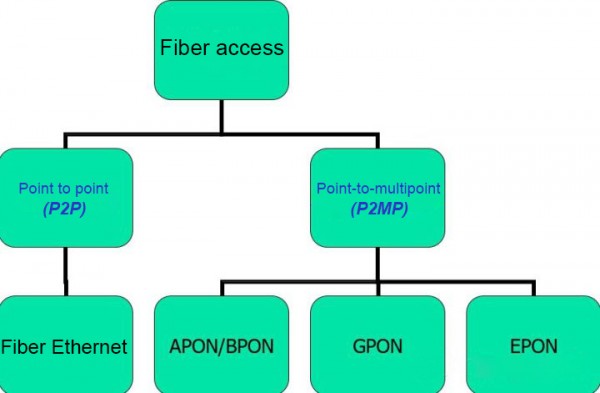
2. EPON introduction
(1) What is EPON?
EPON (Ethernet Passive Optical Network) is a kind of point-to-multipoint network structure, passive optical fiber transmission method, based on high-speed Ethernet platform and TDM (time division multiplexing) time division MAC media access control method, providing multiple An integrated service broadband access technology.
The EPON system uses WDM technology to realize single-fiber bidirectional transmission.
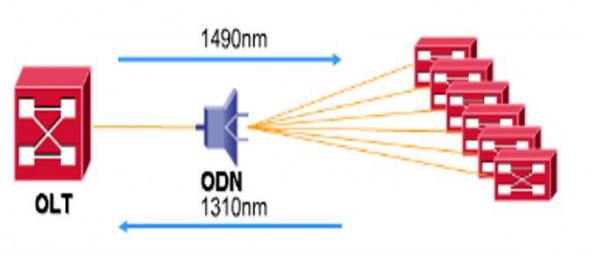
(2) Principle of EPON
In order to separate the incoming and outgoing signals of multiple user pairs on the same fiber, the following two multiplexing techniques are used.
a. The downstream data stream uses broadcast technology.
b. The upstream data stream adopts TDMA technology.
(3)The principle of EPON-downstream
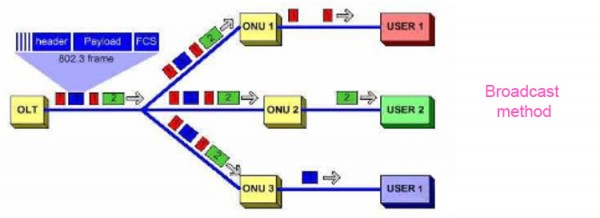
a. Assign a unique LLID after the ONU is successfully registered.
b. Add an LLID before the start of each packet to replace the last two bytes of the Ethernet preamble.
c. Compare the LLID registration list when the OLT receives data. When the ONU receives data, it only receives frames or broadcast frames that match its own LLID.
(4)Principle of EPON-Uplink
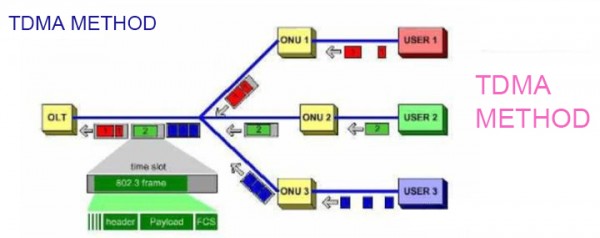
a. Compare the LLID registration list before the OLT receives data.
b. Each ONU sends a data frame in the time slot uniformly allocated by the office equipment.
c. The allocated time slot compensates for the distance gap between the ONUs and avoids collisions between the ONUs.
(5)Working process of EPON system
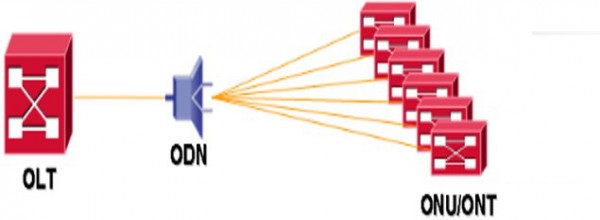
OLT operation
a. Generate timestamp messages for system reference time.b. Assign bandwidth through MPCP frames. 3. Perform ranging operations.
c. Control ONU registration.
ONU operation
a. The ONU synchronizes with the OLT through the time stamp of the downstream control frame.
b. ONU waits for discovery frame.
c. ONU performs discovery processing, including: ranging, specifying physical ID and bandwidth.
d. ONU waits for authorization, ONU can only send data during authorized time.
(6)Design of EPON network management system
The EPON network management system is divided into four modules according to network management functions: configuration management, performance management, fault management and safety management.
(7)Realization of EPON network management system
a. The realization of EPON network management system includes the realization of management station network management software and the realization of agent station software.
b. The management station network management system is a control entity that provides users with a friendly interactive interface and uses the SNMP protocol to manage the agent process.
c. The realization of SNMP in the agent station mainly includes the realization of agent process software and the design and organization of MIB.
3. GPON introduction
(1)What is GPON?
GPON (Gigabit-CapablePON Gigabit Passive Optical Network) technology is the latest generation broadband passive optical integrated access standard based on the ITU-TG.984.x (International Telecommunication Union TG.984.x) standard, with high bandwidth, High efficiency, large coverage, rich user interface and many other advantages are regarded by most operators as an ideal technology to realize broadband and comprehensive transformation of access network services.
(2)GPON principle
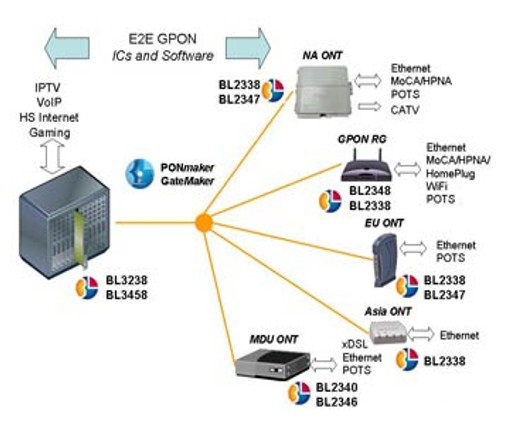
GPON downstream-broadcast transmission
GPONS upstream-TDMA mode
The network topology of passive optical fiber transmission mode is mainly composed of OLT (optical line terminal), ODN (optical distribution network), and ONU (optical network unit).
ODN provides optical transmission means for OLT and ONU. It consists of passive optical splitter and passive optical combiner. It is a passive device that connects OLT and ONU.
(3) GPON principle-upstream
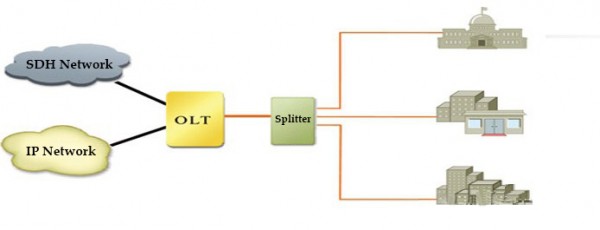
a. The transmission of upstream data is uniformly controlled by the OLT.
b. The ONU transmits user data according to the time slot allocated by the OLT to avoid data transmission conflicts generated by the ONU.
c. The ONU inserts uplink data in its own time slot according to the time slot allocation frame, realizing the sharing of uplink channel bandwidth among multiple ONUs.
(4)GPON networking mode
GPON mainly adopts three networking modes: FTTH/O, FTTB+LAN and FTTB+DSL.
a. FTTH/O is fiber to the home/office. After the optical fiber enters the splitter, it is directly connected to the user ONU. An ONU is only used by one user, with high bandwidth and high cost, and is generally aimed at high-end users and commercial users.
b. FTTB+LAN uses fiber to reach the building, and then connects different services to multiple users through a large-capacity ONU (called MDU). Therefore, multiple users share the bandwidth resources of one ONU, and each person occupies lower bandwidth and lower cost., Generally for low-end residential and low-end commercial users.
c. FTTB+ADSL uses fiber to reach the building, and then uses ADSL to connect services to multiple users, and multiple users share an ONU. The bandwidth, cost and customer base are similar to those of FTTB+LAN.
4. GPON and EPON technology comparison
In view of the different characteristics of GPON and EPON technologies, the following analysis can be made for these two technologies.
(1)GPON supports a variety of rate levels, and can support asymmetric upstream and downstream rates. GPON has greater leeway in the selection of optical components, thereby reducing costs.
(2)EPON only supports ODN levels of Class A and B, while GPON can support Class A, B and C, so GPON can support up to 128 split ratio and up to 20km transmission distance.
(3) Compare only from the protocol, because the EPON standard is based on the 802.3 system structure, so compared with the GPON standard, its protocol layering is simpler and the system implementation is easier.
(4) ITU has followed many concepts of the APON standard G.983 in the process of formulating the GPON standard, which is more complete than the EPON standard formulated by EFM. The provision of a highly efficient TC layer mechanism will become a key point for the ITU in formulating GPON standards.
(5) The GPON standard stipulates that the TC sublayer can adopt two encapsulation methods, ATM and GFP. The GFP encapsulation method is suitable for carrying IP/PPP and other packet-based high-level protocols.
Media Contact
Company Name: HDV Photoelectron Technology Ltd.
Contact Person: Media Relations
Email: Send Email
Phone: (86-755)8600 0116
Country: China
Website: https://www.hdv-fiber.com/
